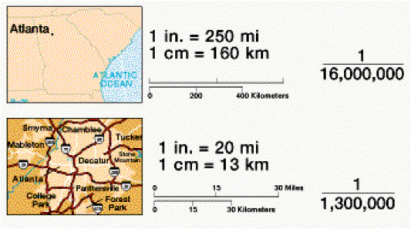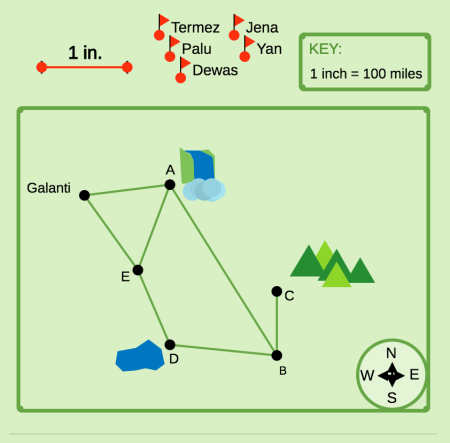My geometry class is 1:1 this year; each student has her own MacBook Air. Students share responses to questions digitally in class using TI-Nspire Navigator for Networked Computers. Students explore mathematics using TI-Nspire dynamic graphs and geometry software. Students explore mathematics and share responses digitally using Demos Activity Builder. We use Canvas, an online learning management system, for assignments. We use Google Drive for sharing electronic documents with each other, and we use MathXL, online homework with built-in learning help, to practice mathematics. What place does pencil and paper have in my students’ learning and understanding of mathematics?
Even though many of the tasks that my students do for geometry take place digitally, I am convinced that pencil and paper plays an important role in how much mathematics my students not only learn but also remember. In a Wall Street Journal article, “Can Handwriting Make You Smarter?“, Robert Lee Hotz reports that students who take notes by hand usually outperform students who type notes when assessed more than one day after the class period. Students who type notes quickly type everything the professor says, but students who handwrite notes have to process the information while they are hearing it to select what is important to remember (Hotz 2016).
Hotz cites the work of Mueller and Oppenheimer published in Pyschological Science. Their research studies showed that students who took notes by hand performed better on conceptual questions than those who took notes on a laptop. Students performed about the same on factual questions. Their hypothesis for why is that students who take notes by hand choose which information is important to include in their notes, and so they are able to study “more efficiently” than those who are reviewing an entire typed lecture (Mueller and Oppenheimer 2014). Note: These studies are on college students; I have found little research on grade school students.
For several years now, my students and I have been learning how to learn mathematics using the Standards for Mathematical Practice. MP8, “look for and express regularity in repeated reasoning”, has pushed me to think about having students record what they see instead of just noticing and discussing it.

One of the ways that I’ve learned to talk about “look for and express regularity in repeated reasoning” is to ask students to notice what changes and what stays the same as we take a dynamic action on a geometric figure. Consider a recent learning episode from my classroom.
Students were told that our learning intention was “I can look for and express regularity in repeating reasoning”. The content was conceptual development of the equation of a circle in a coordinate plane using the Pythagorean Theorem. I did not share that specific content with students up front, however, because I wanted it to be revealed as the lesson progressed. I showed them a dynamic right triangle in the coordinate plane.

What changes? What stays the same?
I could have let them simply discuss what they noticed. But instead I asked them to “Notice & Note”, using words, pictures, and numbers to write and sketch what they saw.
Then I asked them to share what they noticed with a partner and add to their own notes as desired.

Our classroom discussion revealed that the equation of the circle formed by tracing point P was x2 + y2 = 52.

Students continued to “Notice & Note” as they moved a circle around in the coordinate plane. What changes? What stays the same?


As we moved P around in the coordinate plane, and then as they later moved the circle around in the coordinate plane students noted what they saw. Eventually, students generalized the center-radius form of an equation.

Notice & Note, by Kylene Beers and Robert E. Probst, is a guide of signposts (strategies) for close reading of text. Students are taught signposts to notice while they are reading, and they are asked to stop reading and note what the signpost might imply. “Again & Again” is one signpost. Do you notice an event in the text that keeps happening again and again? Do you notice a phrase in the text that is repeated again and again? Stop reading, note it, and think about what that might mean (Beers and Probst 2013). How might we take advantage of the ways that students are learning to read text in their English Language Arts (ELA) classes to guide students in inquiry based exploration of mathematics?
In her online course, Sunni Brown, author of The Doodle Revolution, states that “Tracking content using imagery, color, word pictures and typography can change the way you understand information and also dramatically increase your level of knowledge and retention” (Brown 2016). How do we make tracking content using words, pictures, and numbers a reality in the 1:1 classroom? My experience is that it doesn’t happen without deliberate emphasis on its importance.
In Reading Nonfiction, Beers and Probst write “When students recognize that nonfiction ought to challenge us, ought to slow us down and make us think, then they’re more likely to become close readers” (Beers and Probst 2016). Our ELA counterparts are on to something. Effective classroom instruction is not just about creating learning episodes for our students to experience the mathematics using the Math Practices. Effective classroom instruction incorporates practices that will help students remember what they are learning longer than for the next test.
As I think about our district’s continued implementation of 1:1 technology, I am convinced that we need to pay attention to when we are asking, encouraging, and requiring students to use pencil and paper to create a record of what they are learning. I am interested in thinking more about how we might blend the use of dynamic graphs and geometry software with Notice & Note – using words, pictures, and numbers, along with color, so that students not only have a record of what they are learning but also have a better chance of remembering it later. And so, the journey continues …
References
Beers, G. Kylene, and Robert E. Probst. Notice & note: Strategies for close reading. Portsmouth: Heinemann, 2013. Print.
Beers, G. K., & Probst, R. E. (2016). Reading nonfiction: Notice & note stances, signposts, and strategies. Portsmouth: Heinemann.
Brown, S. (n.d.). Visual Note-Taking 101 / Personal Infodoodling™. Retrieved April 25, 2016, from http://sunnibrown.com/visualtraining
Hotz, Robert Lee. “Can handwriting make you smarter?” The Wall Street Journal. 04 Apr. 2016. Web. 25 Apr. 2016.
Mueller, P. A., and D. M. Oppenheimer. “The pen is mightier than the keyboard: Advantages of longhand over laptop note taking.” Psychological Science 25.6 (2014): 1159-168. Web.






























































